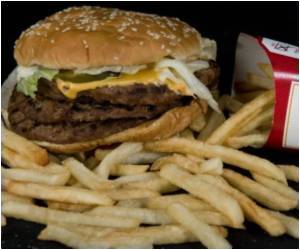Every lunchtime at a McDonald's on the corner of one of central New Delhi's biggest streets, queues of hungry young patrons, often four-wide and unruly, snake towards the counters.

The majority of those standing in line are under 30, most are in Western rather than Indian dress, and almost all in their choice of conversation and style are identifiably part of the much-fabled booming Indian middle class.
The only exceptions are the cheaply dressed office assistants who arrive bearing orders for McSpicy wraps or McVeggie burgers for their superiors back in the nearby corporate buildings.
"My elders say 'don't eat at Mcdonald's because it's not good for your health' but I don't listen to them," said 20-year-old student Salman Khan as he left the store on Janpath with a friend. "It's cheap and tasty."
Drawn by a growing and increasingly wealthy population of young people in India, McDonald's aims to increase the number of its outlets in the country from about 200 to 1,000 in the next five years.
Yum! Restaurants, which owns the KFC, Pizza Hut and Taco Bell brands, will open 100 new outlets this year in India and also aims to have 1,000 restaurants by 2015, most of the them selling fried chicken.
Advertisement
"We are quick, hygienic, clean and are seen as part of global culture."
Advertisement
"We are very focused on young people. Our core target is young adults, the under 30s, and that also includes teens," Dhruv Kaul, director of marketing at KFC India, told AFP in an interview.
"In the last couple of years, our marketing has increased. We have more and more on television and massive spillover."
The result can be seen on the KFC India Facebook page, he says, where you see "umpteen requests asking 'when are you coming? when are you opening here?' There is a lot of latent demand."
KFC "is very aspirational in smaller towns... the awareness of the brands is there and they're waiting to join the party."
As well as its favourable demographics and openess, India has a strong culture of eating on the run at street-side stalls and snacking on greasy deep-fried dishes, such as samosas or pakoras.
Add all this together and it is not hard to see why the country of 1.2 billion people is seen as a sort of Eldorado by the fast-food industry.
"Asia is the hottest area in terms of growth so there are bound are to be more brands coming out here," Bakshi from McDonald's said.
"The market is so large and so wide and is growing at such a great pace that I believe today more people coming in only helps the category of food services. It allows us collectively to reach across to the consumers."
But the increasing consumption of processed food that is high in fat and sugar is causing worries that India is importing the Western disease of obesity, creating a ticking public health bomb that the country can ill-afford.
While undernutrition is rampant -- more than 50 percent of children are stunted due to malnutrition, according to a 2008 study in The Lancet medical journal -- the over-fed middle class is growing in numbers and in trouser sizes.
A November 2010 study by the National Diabetes, Obesity and Cholesterol Foundation of India found that one in three children in private schools in New Delhi were obese, compared with one in ten in government schools.
The average daily intake of fat per person rose by a third in urban India from 1972-73 to 2004-05, figures from the National Sample Survey Organization show, and is expected to have increased further since then.
"Obesity is emerging in India which has serious implications for metabolic health in the future," researcher Seema Gulati told AFP.
"Schoolchildren are attracted to the way it (junk food) is advertised," she said. "They feel it is something that is high status. They want to try it out."
The warnings about the future impact are multiplying.
A major 2010 study called "The Rise of Asia's Middle Class" by the Asian Development Bank warned that in the next 20-30 years Asia will be faced with "an increasing number of chronic diseases on a scale previously unseen".
These include cancer, heart disease and diabetes, which are linked to the adoption of high-fat, high-sugar diets coupled with sedentary lifestyles involving little physical activity.
"Casual empiricism suggests that the urban middle class has become more sedentary as it has come to rely more heavily on motor vehicles, raising levels of obesity," it stated.
In another study published last month, the International Federation of the Red Cross focused on the "double-edged scandal" of the co-existence of malnutrition and obesity.
Source-AFP














